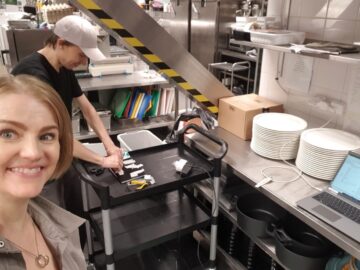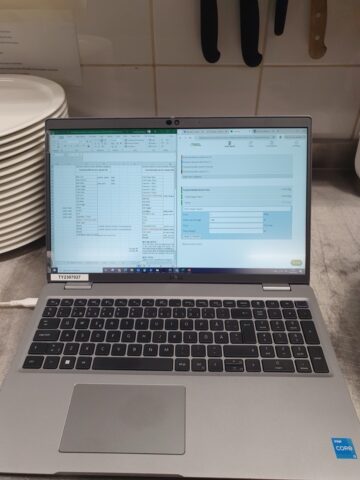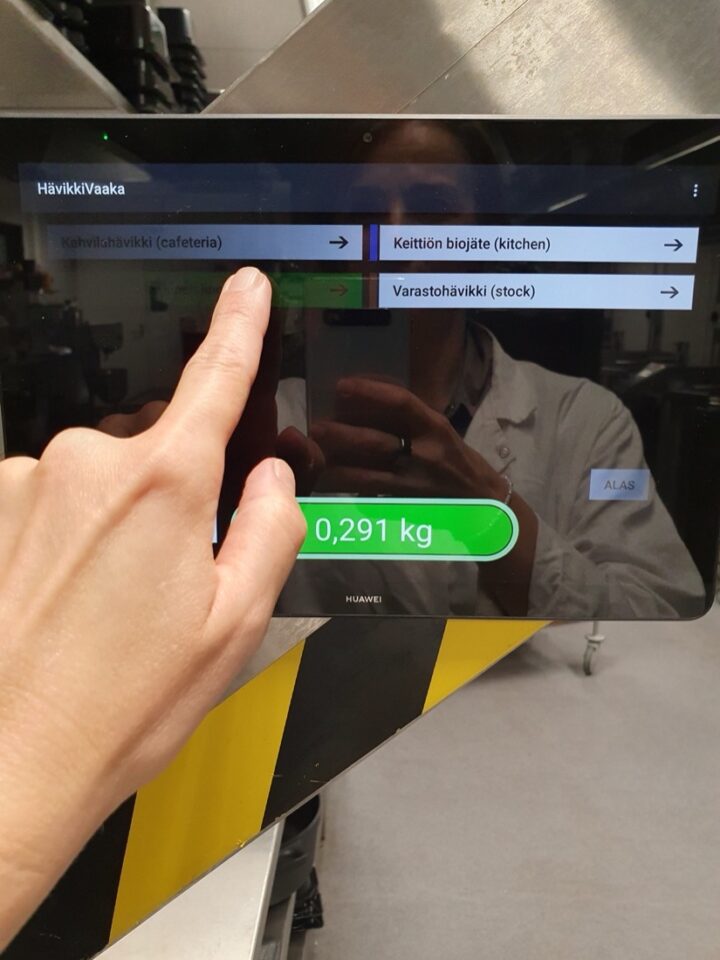Data comes in many forms in a self-serving restaurant
What the kitchen staff says: “Yes, we are measuring all the food waste categories: kitchen biowaste, service waste and stock waste”
What the researcher is thinking: Great, we will have food waste data available!
What the field study revealed: Food waste is estimated without a scale. Reported kilograms are nicely rounded numbers written on paper and manually entered into the kitchen management system at the end of the week.
We initiated Scale Experiment #1 in 24th June 2024 to measure main food waste categories in the kitchen. Change is always challenging to the busy kitchen staff, so we placed the SmartKitchen Food WasteTracker at the kitchen exit door. A reminder was posted at the door to prompt staff to stop and weigh the waste.
Each waste category was collected and weighed
Each waste category was collected daily to dedicated containers at the end of the day, when the biowaste containers were emptied. Staff found this new process simple and easy to follow. We were able to remotely monitor the actual weighed food waste quantities (with time stamps!). Service waste turn out to be the largest category, so we decided to take a deeper look into it.
Scale in the heart of kitchen
At first, the kitchen staff was hesitant, concerned that there would not be enough space for the scale in the heart of the kitchen. Together with the staff, we found a solution – though it required another change to their daily routine. Installations were done by Lauri and Susanna.

Scale Experiment #2 was launched on 26 August 2024. Susanna collected staff feedback weekly, and several iterations and minor tweaks was made accordingly. Since kitchen professionals are constantly busy, they don’t typically send e-mails, or make phone calls, if something minor needs to be fixed or changed. The best approach was simply to ask in person how things were going – feedback was guaranteed.

Result: win-win-win!
- The restaurant manager now has continuous access to actual food waste data (to manually input to the kitchen management system), and not depending to collecting papers.
- The chefs don’t want to return to old paper-and-pen method.
- The researchers are happy, because now we have real food waste data.
P.S. This is not the end of the development story, but merely begin. Automated data transfer to the kitchen management system requires systems integrations. We could also implement container-based tracking of the service waste (and for the produced food).

